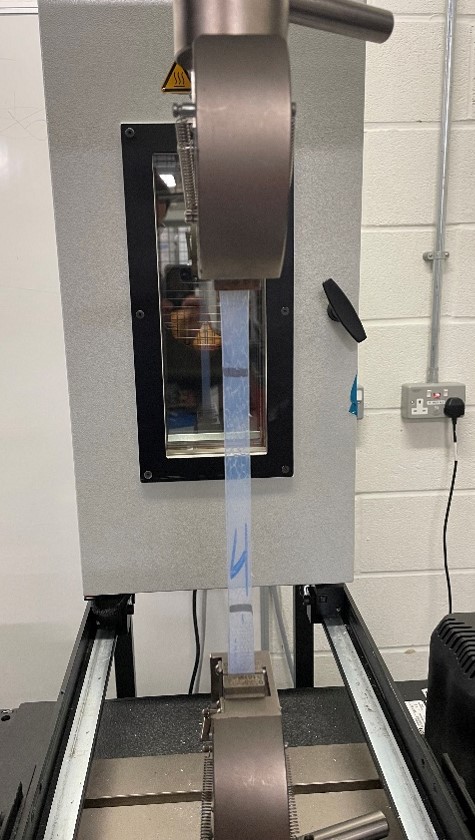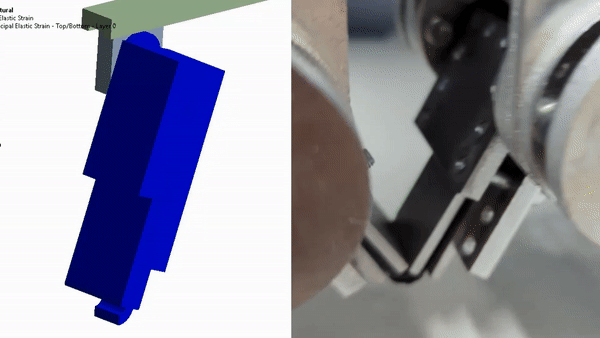Letters from the Lab #003
“How do you know it will work?” is a question asked of all companies in the early stages of developing new technology. For a company like Actuation Lab, where the technology is physical hardware, development means overcoming time consuming (and expensive) manufacturing challenges, negotiating increasingly strained material supply chains, and building quality control systems.
written by Michael Dicker, CTO at Actuation Lab
“How Do You Know it Will Work?” – Simulation at Actuation Lab
“How do you know it will work?” is a question asked of all companies in the early stages of developing new technology. For a company like Actuation Lab, where the technology is physical hardware, development means overcoming time consuming (and expensive) manufacturing challenges, negotiating increasingly strained material supply chains, and building quality control systems. So how do we de-risk product development and build confidence that a design decision is correct, before overcoming all the challenges of actually manufacturing the product? One of the ways we do this at Actuation Lab is to employ computation tools to simulate product performance. In this blog post I want to tell you a little bit about how we simulate our Callimorph composite actuator using Ansys Mechanical software.
Step 1 – Material Characterisation
Any simulation is only as good as the underlying data and assumptions that underpin it. At Actuation Lab we work with both anisotropic composite materials and hyperelastic polymers, complex materials with inherently non-linear properties. To aid with characterising these advanced material systems we employ the skills and expertise of both the National Composites Centre and Axel Products to help us get the most accurate materials data to input into our models.

Figure 1 – Hyperelastic polymer in tension test
Step 2 – Sub-components
Once we have model parameters calibrated to the material data, we don’t immediately go and simulate the full Callimorph product, instead we start with representative sub-components or test coupons. While a model may work well if fed with good material data and simple loading applied, once more advanced combinations of materials are used and subjected to complex loading, it’s possible to induce micro-mechanical behaviour that isn’t captured by the underlying material model. To tune our models to capture this phenomenon we have developed a representative test coupon and accompanying loading rig. This allows us to validate material models against easy to manufacture coupons before investing in manufacturing the full Callimorphs.

Figure 2 – Coupon FEA model and empirical test side-by-side
Step 3 – Full Callimorph Simulation
Only after taking coupon data at a subcomponent level do we apply our tuned material parameters to the full product. Having validated the model at the coupon level, we can then simulate with confidence material systems and Callimorph geometries that we may not yet be able to manufacture into a full Callimorph. Simulation allows us to decide on the best material or tool geometries to invest in, and gives us confidence that the technology will work, long before the manufacturing processes have been refined.

Figure 3 – Animated full Callimorph FEA simulation
The Tools We Use – Ansys Start-up Package
Actuation Lab is part of the Ansys Start-up programme, provided to us by Wilde, a scheme that gives SMEs like us access to the complete suite of Ansys products at a greatly reduced rate. Although simulation is a relatively small part of our work at Actuation Lab, our models include large deformations and both composite and hyperplastic materials, so having access to a fully featured Finite Element Analysis package like Ansys is a must. I’ve been very impressed with the capabilities of Ansys, and features like auto mesh convergence checking, material designer for representative volume elements, and auto ply drops are impressive. However, the overall user experience with regards to the interface and how it is accessed (although great by the standard of most engineering software) increasingly feels dated.
In a world of cloud-based apps that can be accessed quickly and intuitively anywhere on any device, and where working collaboratively in real-time in documents is the norm, I kind of expect more. So I was really excited to see the recent news that Ansys had acquired OnScale, a browser-based FEA solution. I would strongly encourage Ansys to put effort into building OnScale into a fully featured FEA solution for the future, as the OnScale solution is very appealing to SMEs like us, and I suspect many others, that now embrace flexible working. In the meantime, if you are an engineering start-up looking for a fully featured simulation package, I encourage you to have a look at Ansys, it really is a good simulation package, and it has certainly been a big help to us.









